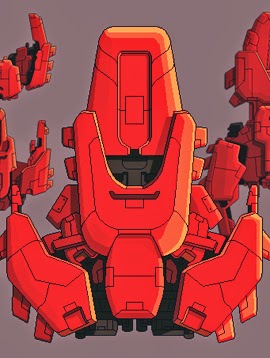Most of them, if not all of them, are going to die. And when you are done staring blankly at the lifeless hull of your spaceship drifting in space or the flaming wreckage left behind by pirates, an entirely new crew will be randomly generated to begin the mission anew. Their chances to survive aren't any better.
Since every encounter is randomly generated, there is nothing to remember, repeat until you active perfection, or attempt to work around. It's an exceptional exploration against the clock game that plays as fresh the first time as it does the tenth time.
Faster Than Light plays like a native on the iPad.
The Krestral begins as a stripped ship with light armaments. Its laser mostly relies on the same energy that powers the shields, engines, sick bay and life support. And while Artemis missiles require less energy to launch at a hostile ship, they are considerably more finite and hard to come by.
There are other ship systems to keep on an eye on too. Someone has to be stationed on the bridge so the ship can jump from one waypoint to another. Working sensors are critical to keep abreast of everything from bow to stern. And the ability to remotely open doors remains the best method of fire suppression.
During firefights, losing even one or two systems can be painful if not fatal. And since the battles play out in real time, players must use their limited crew members to balance conflicting priorities at best or sacrifice them at worst.
The space opera is alive and well with Faster Than Light.
With permanent death (permadeath) at its core, the developers have done gaming a great justice in adding a layer of urgency to the experience. It creates an incentive to explore as much of each sector as possible despite the time pressure, leveling up the crew and upgrading ship systems in preparation for an increasingly dangerous onslaught of threats.
While many of them will become familiar — infected space stations in need of assistance, derelict spaceships that serve as decoys for private, well-armed rebel patrol ships on a perimeter search — all of them play out remarkably different. Yes, the mechanics are fundamentally the same but not the cosmetics. More than anything else, it's these subtle changes that make every encounter engaging and unexpected.
A couple graphs about the developers.
 Three years ago, artist-designer Justin Ma and programmer-designer Matthew Davis left the safety and security of an established game developer. They wanted to create something they could stand behind.
Three years ago, artist-designer Justin Ma and programmer-designer Matthew Davis left the safety and security of an established game developer. They wanted to create something they could stand behind.Inspired mostly by the storyline of Firefly, simplicity of Spelunky, and several imagination-based board games, the duo took a year off to create a singular-player spaceship simulation game. The result was a scrappy and roguish indie game that needed about $10,000 to finish the beta work, cover some business start-up costs, and pay their sound designer.
They raised $200,000 instead and the space opera game Faster Than Light went on to win several indie game awards and capture critical praise from a number of reviewers. Plenty of developers would have been satisfied with the initial success and dashed off to make new games. So far, Davis and Ma have mostly doubled down and migrated the entire game to the iOS platform.
FTL: Faster Than Light Jumps 8.1 On The Liquid Hip Richer Scale.
Although not as epic as Star Command, which resembles Star Trek more than Firefly, Faster Than Light is a surprisingly detailed yet straightforward space game that accomplishes everything it set out to do. It is mildly nerve wracking and immeasurably fun to hold the fate of the universe in brisk 30- to 90- minute segments. There is also a certain freedom with the linear trappings of a tight storyline.
FTL: Faster Than Light is now available for the iPad. The new interface is right in line with the desktop, even though it is played at a noticeably slower pace. The tap-tap-tap elements of the game also take some getting used to but the learning curve is relatively quick. You can also download the original FTL: Faster Than Light [Desktop] version from Amazon.
![Liquid [Hip]](https://blogger.googleusercontent.com/img/b/R29vZ2xl/AVvXsEjAFBQPqS7J0-rrttNoRYSsuwIePPZf4Nq6sqDioK1zzVQXJIQXKzq_NVNI4n6h3inuRQFBKOcJeZeSufkdHHIOxbSWyBjTjTxgKEQGyPzdwvkEEeECh4bI5YEGk4RWGUINSd7vulPQsCA/s1600-r/liquidhip.jpg)
